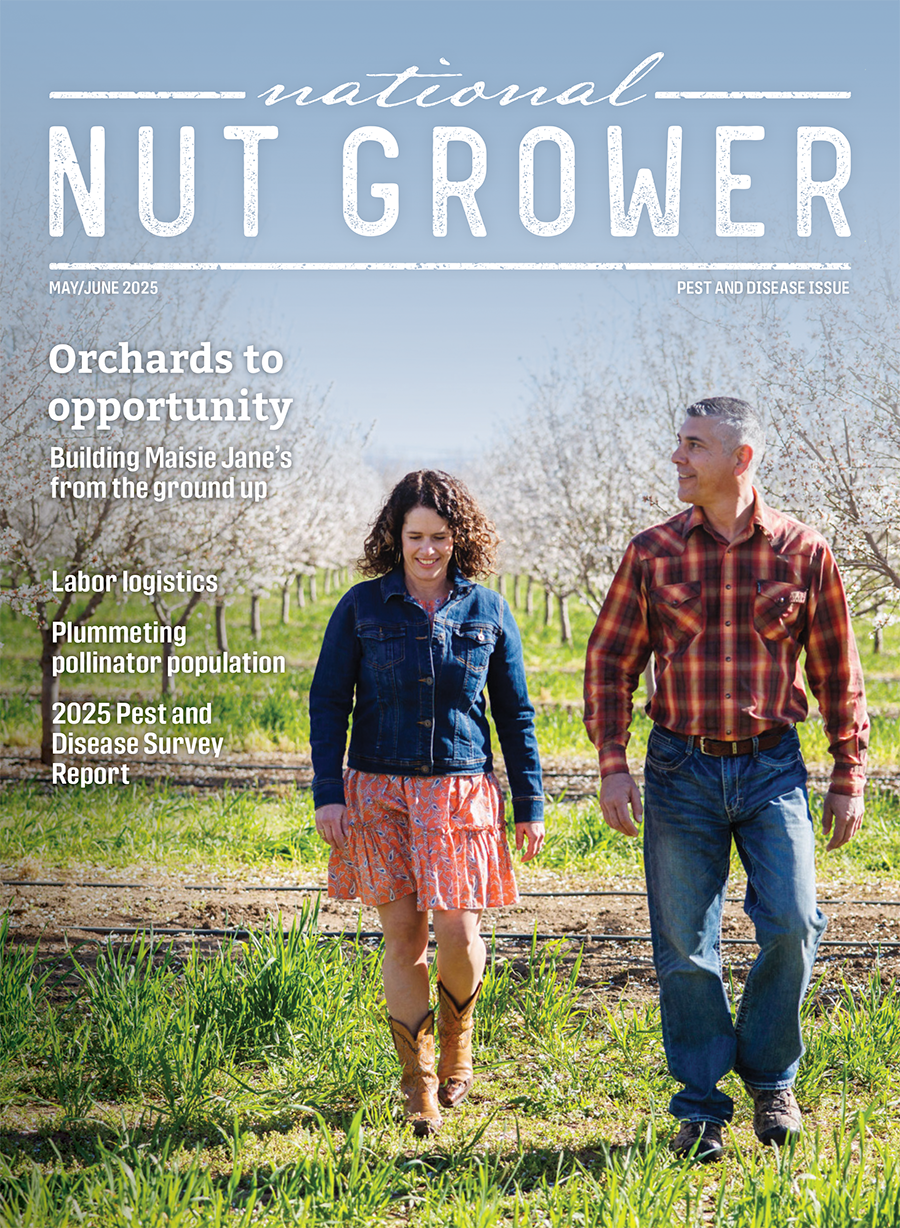
May 13, 2022Walnut Board research converts industry assessments into science-based orchard innovation
Production research is delivering significant payback for grower investment, evident at any California walnut orchard. California Walnut Board research goes back nearly five decades, and more innovative projects are underway to help ensure the industry is competitive in the future. A Legacy of Innovation and Research An internet search for “California walnut research” will surface scientific articles, reports, bulletins, and pamphlets dating back to the early 1900s. Until the 1970s, scientific investigations on walnut culture, pests, and diseases were performed by university and government agency scientists supported entirely by state and federal funds. In 1975, recognizing that research needs were beginning to outstrip available public sector funding, the then Walnut Marketing Board established a production research program and approved $25,673 in initial funding for three projects. Over subsequent decades, the walnut industry investments in production research have grown steadily. (Figure 1) A glance around any of today’s orchards reveals the profound payback from these investments: Production Research Goals The production research program operates on an annual cycle that begins with the Board issuing a formal call for proposals in late October. Then in March, the Production Research Committee (PRC) meets to review and decide which proposals will be funded – or not. In 2007, the PRC established the Production Research Advisory Council (PRAC) to assist in these tasks. The PRAC, which serves in an advisory role to the PRC, has grower members representing the main walnut growing areas of the state and research/extension members with expertise in various relevant subject matter areas. (Figure 2) The overarching goals of the production research program are defined by the Board as part of its regular strategic planning process. The most recent version of these goals includes: “The PRAC has taken these goals and expanded each into a comprehensive and detailed document – updated periodically – that lists individual specific research needs and problems, ranks them as high, medium or low priority, and lays out a research roadmap of the best methods for going about solving them,” said Research Director Joe Grant. “There are many more research needs on this list than there are research dollars, so a problem that is not ranked among the ‘highest of the high’ is probably not going to be approved for funding,” he added. With the help of the PRAC, the PRC works to ensure that the program has a good mix of long- and short-term efforts that will continue to deliver outcomes that provide tangible benefits for our growers to keep our industry ahead of our global competitors. – California Walnut

RELATED
Persistent, scorching temperatures can put crops, including tree nuts, at risk. California crops continue to take a beating as California farmers work to reduce impacts of a lingering heat wave...
The University of California Cooperative Extension (UCCE) will host the August North Sac Valley "Third Thursday Things from the Field!" a fruit and nut growers seminar. This educational forum will...









